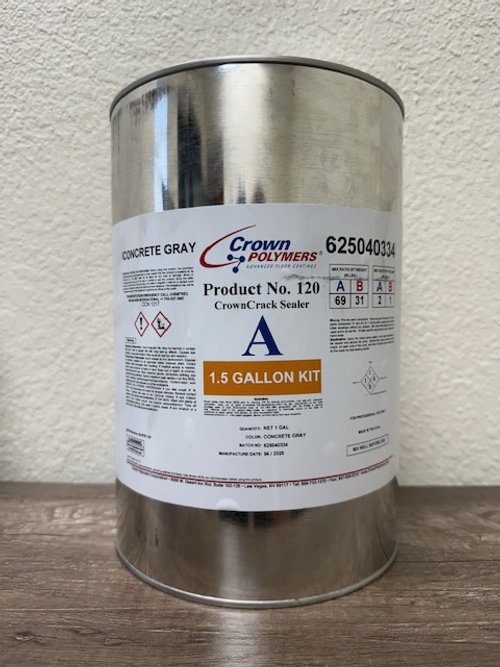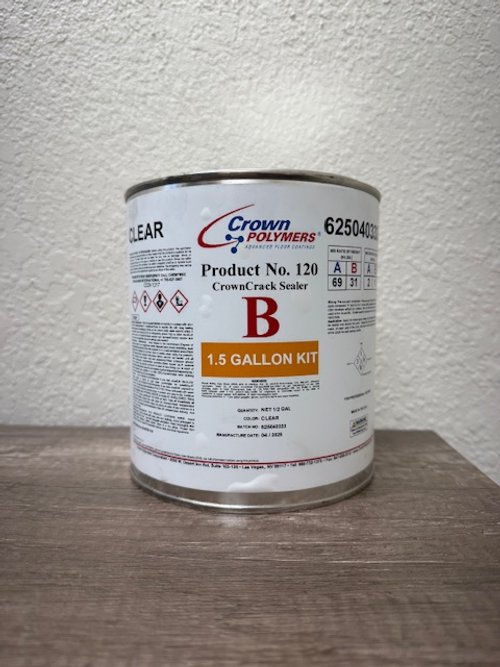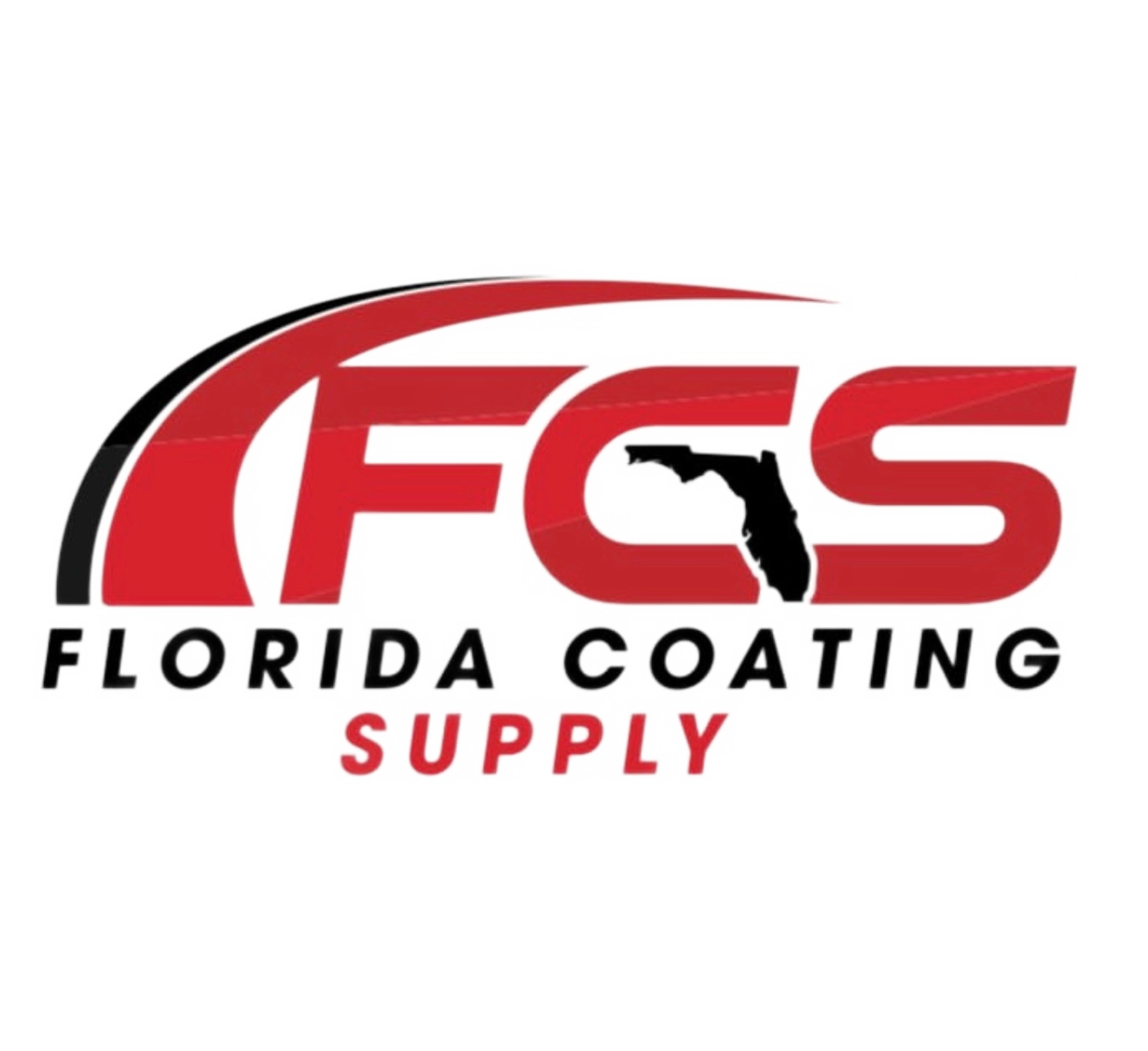 Image 1 of 2
Image 1 of 2

 Image 2 of 2
Image 2 of 2



CROWNCRACK SEALER 1.5 GALLON, NO. 120
120 CrownCrack Sealer is 100% solids, non-shrink, non-sag, moisture insensitive, two-component modified high-modulus smooth epoxy paste adhesive formulated to adhere and cure on damp or dry surfaces.
Using crowncrack concrete sealer before applying epoxy is critical for ensuring a durable, long-lasting, and visually appealing finish. Here’s why it’s important:
Prevents Epoxy Leakage: Cracks in concrete can allow epoxy to seep through or pool unevenly during application. A quality crack sealer fills and seals these gaps, creating a smooth, stable surface that ensures the epoxy adheres properly and uniformly.
Enhances Structural Integrity: Cracks, even small ones, can worsen over time due to stress, temperature changes, or moisture infiltration. A good crack sealer reinforces the concrete, stabilizing cracks and preventing further deterioration, which could otherwise compromise the epoxy coating’s performance.
Improves Adhesion: Epoxy requires a clean, solid surface to bond effectively. Unsealed cracks may harbor dust, debris, or moisture, which can weaken the epoxy’s adhesion. A proper sealer fills cracks and creates a compatible surface for the epoxy to grip, reducing the risk of peeling or delamination.
Reduces Moisture Infiltration: Cracks can allow water or moisture to penetrate the concrete, which can lead to issues like mold growth, efflorescence, or freeze-thaw damage in colder climates. A high-quality crack sealer forms a waterproof barrier, protecting the concrete and ensuring the epoxy coating remains intact.
Ensures a Smooth Finish: Unsealed cracks can create visible imperfections in the epoxy coating, such as bubbles, uneven patches, or lines. Filling cracks with a good sealer smooths out the surface, resulting in a professional, seamless appearance.
Extends Coating Lifespan: By addressing cracks properly, a sealer helps prevent future damage that could cause the epoxy to crack, chip, or lift. This extends the lifespan of the epoxy coating, saving time and money on repairs or recoating.
120 CrownCrack Sealer is 100% solids, non-shrink, non-sag, moisture insensitive, two-component modified high-modulus smooth epoxy paste adhesive formulated to adhere and cure on damp or dry surfaces.
Using crowncrack concrete sealer before applying epoxy is critical for ensuring a durable, long-lasting, and visually appealing finish. Here’s why it’s important:
Prevents Epoxy Leakage: Cracks in concrete can allow epoxy to seep through or pool unevenly during application. A quality crack sealer fills and seals these gaps, creating a smooth, stable surface that ensures the epoxy adheres properly and uniformly.
Enhances Structural Integrity: Cracks, even small ones, can worsen over time due to stress, temperature changes, or moisture infiltration. A good crack sealer reinforces the concrete, stabilizing cracks and preventing further deterioration, which could otherwise compromise the epoxy coating’s performance.
Improves Adhesion: Epoxy requires a clean, solid surface to bond effectively. Unsealed cracks may harbor dust, debris, or moisture, which can weaken the epoxy’s adhesion. A proper sealer fills cracks and creates a compatible surface for the epoxy to grip, reducing the risk of peeling or delamination.
Reduces Moisture Infiltration: Cracks can allow water or moisture to penetrate the concrete, which can lead to issues like mold growth, efflorescence, or freeze-thaw damage in colder climates. A high-quality crack sealer forms a waterproof barrier, protecting the concrete and ensuring the epoxy coating remains intact.
Ensures a Smooth Finish: Unsealed cracks can create visible imperfections in the epoxy coating, such as bubbles, uneven patches, or lines. Filling cracks with a good sealer smooths out the surface, resulting in a professional, seamless appearance.
Extends Coating Lifespan: By addressing cracks properly, a sealer helps prevent future damage that could cause the epoxy to crack, chip, or lift. This extends the lifespan of the epoxy coating, saving time and money on repairs or recoating.
